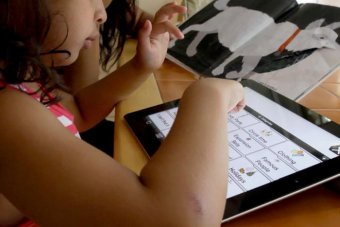A new study indicates that the number of autism cases in Australia is increasing among younger children.
Researchers from the Murdoch Children’s Research Institute have found that 1.5 per cent of all 10 and 11 year olds have an autism spectrum condition, compared to 2.5 per cent of four and five year olds.
What is not clear is whether the condition is becoming more prevalent, or if it is simply being diagnosed more effectively.
Whatever the cause, experts say Australian schools need to prepare for an increase in autistic students.
Dr Emma Sciberras and the team from the Murdoch Children’s Research Institute examined the development of 10,000 children from a wide range of backgrounds for their study.
“What we’re going to do is continue to follow this group to see whether or not it does represent a shift towards the younger diagnosis or whether or not diagnosis will continue to rise,” she said.
Dr Sciberras said it was not clear whether the difference in prevalence represented an increase in diagnosis.
They’re lifelong learners, so it’s not just: school finishes, well this is what they are and they’re not going to progress any further.
Vicki Gibbs, Autism Spectrum Australia
“It may indicate a shift towards a younger age of diagnosis in young children.”
Dr Greg Rowell, a paediatrician with Sydney Children’s Hospital and Royal Prince Alfred Hospital, said he saw a new case of autism in a preschooler under the age of three around once every week or two.
“I think the number diagnosed is definitely going up, that’s pretty much beyond dispute… and I think we are also getting better methods of diagnosing children,” he said.
More than 80 per cent of all of the children diagnosed with an autism spectrum disorder in the study were boys, which Dr Rowell said is typical of what he sees in his practice.
“No doubt males are four to five times as likely to have an autism spectrum diagnosis as females,” he said.
Dr Rowell says researchers still do not understand why that is, but says that “it probably comes down to genetic weaknesses in males”.
He argues that one possible reason autism cases have risen is that it is being bred into the population.
“It comes back to the issue of why the incidence of autism is probably increasing and it’s probably that people who carry the genetic tendency are getting together with people who also have similar genetic tendencies and that’s called assortative mating.”
Schools must prepare for the increase in children with autism
Experts say the education system needs to be prepared for a growing number of students with autism.
Vicki Gibbs is a clinical psychologist and a manager at Autism Spectrum Australia.
“Children with autism have a range of needs during those school age years and we need to make sure that teachers are educated and that the resources are there,” she said.
“And then, as they leave school, we have to be thinking about how we can support them from transition from probably a pretty supportive environment out into the adult world, we need to have programs to assist them in that transition.
“They’re lifelong learners, so it’s not just: school finishes, well this is what they are and they’re not going to progress any further.”
She said improvements are also needed in education for teenagers and adults.
“Young adults with autism can really benefit from continued training in the five or so years after school to support them into being independent, to be able to hold down jobs, find jobs that they enjoy, and to be able to just be part of the community generally, so to engage socially, to develop relationships.
“They really do want the same things as anybody else, they just need a little bit more help and guidance in getting there.”

